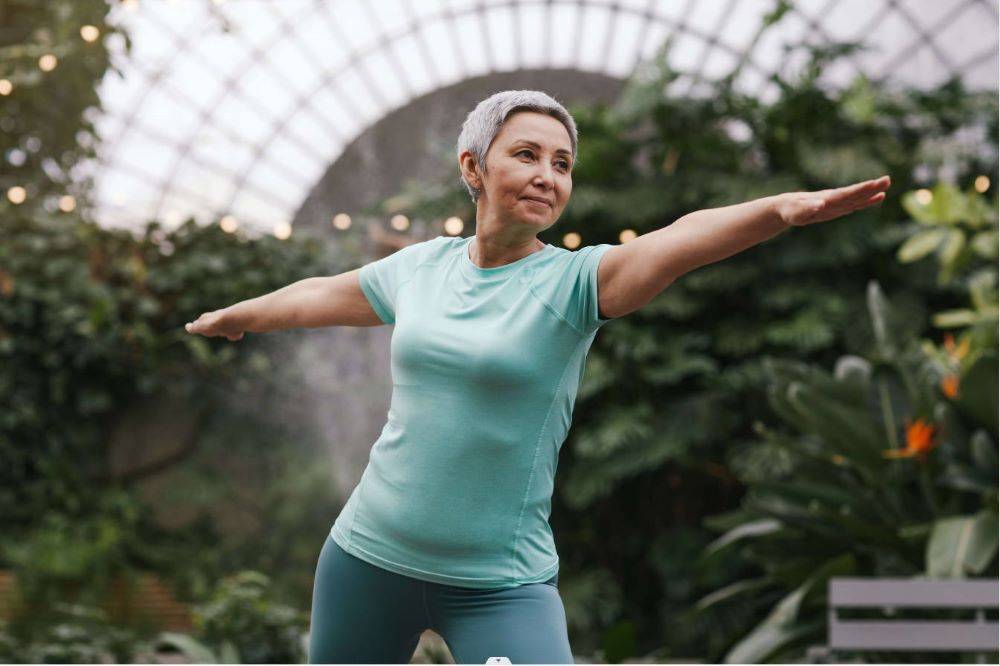Are you tired of constantly monitoring your blood pressure levels? Worried about the potential risks and complications of hypertension? Don't worry; we bring you an effective strategy to lower your blood pressure naturally.
Recently, researchers are trying to find ways to lower blood pressure without relying solely on medication. They have proven that regular physical activity is good for your heart and can help you live longer [1].
In the past, most recommendations focused on traditional aerobic, isometric, high-intensity exercises and combinations of these methods. So, the question remains: What's the best exercise routine to manage high blood pressure? Here, we have compiled a list of 5 best exercises for people with high blood pressure.
What does the research say about exercises for blood pressure?
The efficacy of various forms of exercise in reducing blood pressure was recently examined across 270 different research trials and summarized in a systematic review published in the British Journal of Sports Medicine [2]. According to this trial, all of the following exercises were proven to be effective in lowering blood pressure:
●Aerobic exercises
●Strength exercises
●Mixed-exercise training or combined training
●High intensity-interval exercises
●Isometric exercises
The review also showed that isometric exercises significantly reduce blood pressure (by 8.24 mmHg). Other effective exercises are combination training, strength, aerobic, and high-intensity interval training.
Studies have shown over and over again how these exercises can lower both systolic and diastolic blood pressure levels by a lot.
In 2014, the Journal of Diagnostic and Clinical Research did a study that showed that isometric handgrip movements, in which you squeeze a handgrip device as hard as you can for several minutes, lowered high blood pressure by an average of 10% [3].
These results show that isometric exercises are especially good for people with high blood pressure who may be unable to do other types of exercise because of physical limits or lack of time.
Here are the five best workouts for high blood pressure
Isometric exercises are those in which you tighten certain muscles and hold them without moving the joints. These workouts not only make your muscles stronger and more durable, but they also lower your blood pressure. So, which workouts are best for people with high blood pressure? Here are five suggestions you might want to add to your exercise routine:
1. Planks:
Planks are a great way to build your core muscles, which can help lower your blood pressure. Go down on your wrists like you're doing a push-up. Keep your back straight and stay in this pose as long as possible. Start with a 20- to 30-second hold and slowly lengthen it as your strength grows.
2. Wall sit squat:
Wall sit squats are a good way to work your leg muscles and can indirectly help you control your blood pressure. Put your back against a wall and place your feet about hip-width apart. Now slide down the wall and bend your knees to 90 degrees. Hold this position for at least 20 seconds and repeat.
3. Hand gripping:
Using a hand grip or squeeze ball to do hand-gripping exercises is a simple and effective way to lower blood pressure. Hold the gripper in one hand and squeeze the handles as hard as possible for about 5 seconds. Slowly let go of the hold, and do this 10–15 times with each hand.
Repeating and releasing the grip engages your hand muscles and can improve blood flow and vascular function over time. This improved vascular function can lower blood pressure, especially if performed regularly as part of an overall fitness routine.
4. Brisk walking:
Walking briskly or moderately for 10 minutes three times daily can help lower your blood pressure effectively. This is because brisk walking makes your blood vessels more flexible, so blood can flow more easily. One study found that taking three 10-minute walks daily is better at avoiding blood pressure fluctuations than taking one 30-minute walk [4].
5. Swimming:
For people 60 and older, swimming is a great way to control blood pressure. In a 12-week study, subjects gradually increased their swimming time to 45 minutes per session. By the end of the study, their systolic blood pressure had decreased by 4 mmHg. Remember that the benefits of exercise only stay with you if you keep doing it. Even if you break your exercise routine for just two weeks, you can lose all the gains you've made[5].
Are there any serious consequences of isometric exercises for extremely hypertensive patients?
One potential concern with isometric exercises is their initial increased strain on the cardiovascular system. For patients with severe hypertension, this sudden spike in BP can be harmful. Experts say that advanced stages of hypertensive individuals should be cautious while practicing isometric exercises daily.
Conclusion
Moderate exercises are an effective natural remedy for controlling your blood pressure. Researchers have also shown the efficacy of isometric exercises in regulating blood pressure. Maintaining a regular workout routine and controlling blood pressure requires dedication and commitment. Perform isometric exercises as prescribed by your doctor. If you have advanced-stage hypotension, beware of practicing any high-intensity workout. Consult your doctor before adopting any exercise routine.
References:
1.Ghadieh, A. S., & Saab, B. (2015). Evidence for exercise training in the management of hypertension in adults. Canadian family physician Medecin de famille canadien, 61(3), 233–239.
2.Edwards, J. J., Deenmamode, A. H., Griffiths, M., Arnold, O., Cooper, N. J., Wiles, J. D., & O'Driscoll, J. M. (2023). Exercise training and resting blood pressure: A large-scale pairwise and network meta-analysis of Randomised Controlled Trials. British Journal of Sports Medicine.
3.Garg, R., Malhotra, V., Kumar, A., Dhar, U., & Tripathi, Y. (2014). Effect of isometric handgrip exercise training on resting blood pressure in normal healthy adults. Journal of clinical and diagnostic research: JCDR, 8(9), BC08–BC10.
4.Murphy, M., Nevill, A., Neville, C., Biddle, S., & Hardman, A. (2002). Accumulating brisk walking for fitness, cardiovascular risk, and psychological health. Medicine and science in sports and exercise, 34(9), 1468–1474.
5.Nualnim, N., Parkhurst, K., Dhindsa, M., Tarumi, T., Vavrek, J., & Tanaka, H. (2012). Effects of swimming training on blood pressure and vascular function in adults >50 years of age. The American journal of cardiology, 109(7), 1005–1010.
WRITTEN BY Checkme
Related Blogs
Recommended Products
Subscribe for special promotions,
healthy knowledge, and more!





